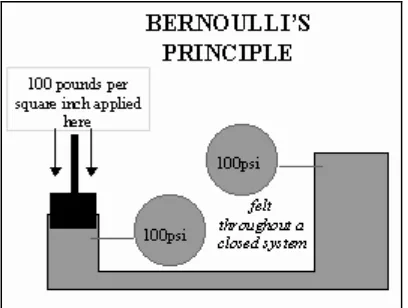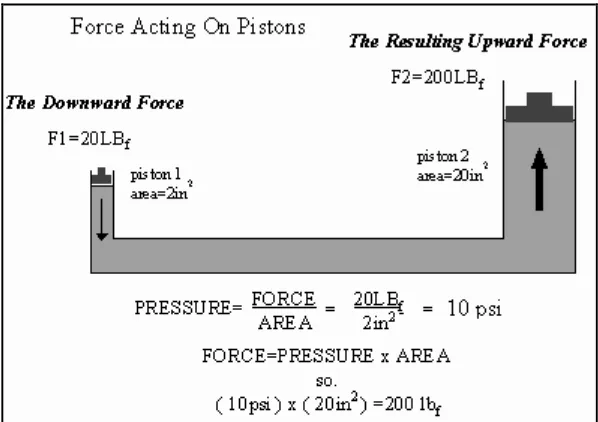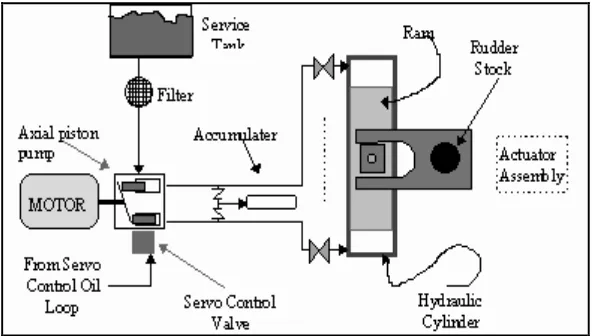PRELIMINARY DESIGN ANALYSIS OF HYDRAULIC
TRANSMISSION
HALIL BIN AMIR
UNIVERSITI TEKNIKAL MALAYSIA MELAKA
PRELIMINARY DESIGN ANALYSIS OF HYDRAULIC
TRANSMISSION
This report submitted in accordance with the requirements of the Universiti Teknikal Malaysia Melaka (UTeM) for the Bachelor Degree of Manufacturing Engineering
(Robotic and Automation) with Honours.
By
HALIL BIN AMIR
FACULTY OF MANUFACTURING ENGINEERING
UNIVERSITI TEKNIKAL MALAYSIA MELAKA (UTeM)
BORANG PENGESAHAN STATUS LAPORAN PROJEK SARJANA MUDA
TAJUK: Preliminary Design Analysis of Hydraulic Transmission SESI PENGAJIAN: 2008/2009 Semester 2
Saya HALIL BIN AMIR
mengaku membenarkan Laporan PSM ini disimpan di Perpustakaan Universiti Teknikal Malaysia Melaka (UTeM) dengan syarat-syarat kegunaan seperti berikut:
1. Laporan PSM adalah hak milik Universiti Teknikal Malaysia Melaka dan Penulis. 2. Perpustakaan Universiti Teknikal Malaysia Melaka dibenarkan membuat salinan
untuk tujuan pengajian sahaja dengan izin penulis.
3. Perpustakaan dibenarkan membuat salinan laporan PSM ini sebagai bahan pertukaran antara institusi pengajian tinggi. atau kepentingan Malaysia yang termaktub di dalam AKTA RAHSIA RASMI 1972)
DECLARATION
I hereby, declared this report entitled “Preliminary Design Analysis of Hydraulic Transmission” is the results of my own research except as cited in the references.
Signature : ………
Author’s Name : ………
APPROVAL
This report submitted to the Faculty of Manufacturing Engineering of UTeM as a partial fulfillment of the requirements for the degree of Bachelor of Manufacturing Engineering (Robotic and Automation) with Honours. The member of the supervisory committee is as follow:
ABSTRAK
ABSTRACT
DEDICATION
Dedicated to my father, Amir Bin Hashim and my mother, Jamilah Bte Yasin.
ACKNOWLEDGEMENTS
Assalamualaikum w.b.t. and warm greeting,
First and foremost, thanks to ALLAH S.W.T for His blessings and strengths, I had finished this project.
Next, I would like to place my gratitude to the ones that contributed to the success of this project. I wish to acknowledge and express my gratitude and appreciation to my supervisor, Mr. Sivarao for his supervision, encouragement, suggestion and assistance through the research. A million appreciations to my project examiner Mr. Md. Nizam B Abd. Rahman for evaluate this PSM II. I would like to thank my parents, Mr. Amir Bin Hashim and Madam Jamilah Bte Yasin where their continuous encouragement, faith and confidence.
Also, I would like to express my biggest thanks to FKP especially Dean of Faculty of Manufacturing Engineering; DrMohd Rizal bin Salleh and all the lecturers in the Faculty of Manufacturing.
TABLE OF CONTENTS
1.4 Hydraulic history and principles 4
1.4.1 Basic Hydraulic Theory 5
1.4.2 Basic Hydraulic Power System 7
1.4.3 Hydraulic accessories 8
1.5 Overview of the Hydraulic Component 9
1.5.1 Hydraulic Pump 9
1.5.1.1 Hydraulic Pump Theory 12
1.5.2 Hydraulic Motor 19
1.5.2.1 Factors Involving Hydraulic Motor 19
1.5.2.2 Selecting the Hydraulic Motor 20
1.5.2.3 Sizing the Hydraulic Motor 21
1.5.3 Control Valves 23
1.5.3.1 Ports and Position 23
1.5.3.2 Types of Valves 24
1.5.4 Hydraulic Fluid 25
2. LITERATURE REVIEW 28
3. METHODOLOGY 38
3.1 Introduction 38
3.2 Project Selection 40
3.3 Develop detail planning 40
3.4 Preliminary investigation conduct 40
3.5 Identify Parameters Involve 41
3.6 Hydraulic system analysis 41
3.7 Hydraulic circuit design 41
3.8 Hydraulic Transmission simulation 42
3.9 Simulation analysis 43
3.10 Analysis discussion 43
3.11 Conclusion 43
4. RESULTS AND DISCUSSION 46
4.1 Hydraulic Analysis 46
4.1.1 Hydraulic Transmission System A 47
4.1.1.1 Discussion on hydraulic transmission A 49
4.1.2 Hydraulic transmission System B 50
4.1.2.1 Analysis torque at 3500 Nm and power at 175Hp 50 4.1.2.2Analysis on pipe pressure and fluid speed 52 4.1.2.3 Discussion on Hydraulic Transmission System B 53
4.1.3 Hydraulic Transmission System C 54
4.1.3.1 Analysis on torque at 5000Nm and power at 241Hp 54
4.1.3.2 Analysis at pipe pressure and fluid speed 55
4.1.3.3 Discussion on hydraulic transmission System C 56
4.1.4 Observation 57
4.2 Hydraulic Circuit design 58
4.2.1 Idling time 59
4.2.2 Forward motion 60
4.2.3 Reverse motion 61
4.3 Circuit analysis 64
5. CONCLUSION 65
5.1 Conclusion 65
5.2 Recommendation 66
LIST OF FIGURES
1.1 Bernoulli’s Principle 4
1.2 Figure example on how to calculate the force acting on pistons 5
1.3 Basic Hydraulic Power System 7
1.4 The head loss theory based on ping pong balls 12
1.5 Graph showing the relationship between pressure and flow rate in a
centrifugal pump. (Courtesy of The Warfighter Encyclopedia) 13 1.6 Basic pump characteristic curve of pressure head versus velocity head.
(Courtesy of The Warfighter Encyclopedia) 14
1.7 Graph shows the characteristic of a pump when speed is increased.
(Courtesy of The Warfighter Encyclopedia) 14
1.8 Graph shows the pressure versus flow rate in parallel operation.
(Courtesy of The Warfighter Encyclopedia) 15
1.9 Characteristic curve Vs velocity. (Courtesy of The Warfighter
Encyclopedia) 15
1.10 Ksys characteristic graph. (Courtesy of The Warfighter Encyclopedia) 16
1.11 Graph shows the pump operating curves with increasing hotwell
level. (Courtesy of The Warfighter Encyclopedia) 17 1.12 The operation inside a impeller of the hydraulic pump 18 1.13 Schematic shows simple circuit to control cylinder extension and
retraction using a 4-port, 3-position spool valve 23 1.14 This cutaway view of a multiple-spool stack valve shows main
directional spools, internal flow passages, and auxiliary valves 24 1.15 Subbase-mounted valves simplify mounting and replacement
of valves because they can be removed and replaced without
disturbing system plumbing 25
3.1 Process flow diagram 39
4.3 Hydraulic transmission system at 3500 Nm and 174Hp 50
4.4 Pipe pressure and fluid speed control 52
4.5 Hydraulic transmission system at 5000 Nm and 241Hp 54
4.6 Pipe pressure and fluid speed control 55
4.7 Hydraulic Transmission Circuit Design 59
LIST OF TABLES
1.1 Table showing the classification and types of pumps 11
3.1 Table Equipment required for the Hydraulic Transmission system 42
3.2 Gantt chart PSM I 44
3.3 Gantt chart PSM II 45
4.1 Hydraulic parameters value and observations 57
LIST OF ABBREVIATIONS, SYMBOLS, SPECIALIZED
NOMENCLATURE
LBf - Pound force
PSI - Per square inch ft2 - feet square in2 - square inches HL - Head loss PH - Pressure Head VH - Velocity head EH - Elevation head TH - Total Head
NPSH - net positive suction head Ksys - system operating curve
Vs - Velocity head
RPM - revolution per minute MFP - main feed pump MCP - main condensate pump
HP horse power
CHAPTER 1
INTRODUCTION
Hydraulics is a topic of science and engineering dealing with the mechanical properties of liquids. Hydraulics is part of the more general discipline of fluid power. Fluid mechanics provides the theoretical foundation for hydraulics, which focuses on the engineering uses of fluid properties. Hydraulic topics range through most science and engineering disciplines, and cover concepts such as pipe flow, dam design, fluid control circuitry, pumps, turbines, hydropower, computational fluid dynamics, flow measurement, river channel behavior and erosion.
Hydraulic system is defined as force that is applied at one point is transmitted to another point using an incompressible fluid (Marshall Brain, 2000). Hydraulic system uses many liquids such as petroleum oils, synthetic oils and water. The first hydraulic fluid to be used was water because it is readily available. However, water has many deficiencies. It is already freezes, a relatively poor lubricant and tends to rust metal components. Hydraulic oils are far superior and hence are widely used in lieu of water.
In hydraulic system, it is consists of hydraulic pump, hydraulic motor and directional valves. These equipments are essential and provide the muscle to do the desired work. The hydraulic pump exhibit the fluid to be transmitted to the hydraulic motor where the motor will produces a torque resulting in a rotary motion. Hydraulic can provide a huge forces and torque to drive loads with utmost accuracy and precision. The interesting thing in hydraulic systems is the ability to apply force multiplication.
torque converter and a set of planetary gearsets to provide a range of torque multiplication, it operates the predominant form of the transmission system (Wikipedia, 2006). The multitude of parts, along with the complex design of the valve body, originally made of the automatic hydraulic transmissions much more complicated and expensive to build and repair than manual transmissions. Mass manufacturing and decades of improvements have reduced the cost. The automatic transmission system also needs high in fuel consumption and high in engine maintenance. Furthermore, once the gearbox is damaged, it is needs a high cost for repairing them due to the expensive parts and services.
The purpose of this project is project is to create a transmission system which only consists of hydraulic system. By removing the mechanical system in the transmission system, we will only use the hydraulic system to provide movement and speed to the car.
The application that will be used to design the hydraulic transmission system will be fulfill the hydraulic system. It is known as hydrostatic transmission that has replaced the mechanical transmission system but the application only can used in heavy vehicles such as track; a type of tractor and the transmission needs a larger engine to be run. With the development of the hydraulic transmission system, maintenance cost can be reduced and a smaller yet compact engine can be developed. Hence it can reduce the cost of making an engine.
1.1 Problem Statement
Based on the problems occurs in a present hydraulic transmission system and mechanical transmission of an automobile, there are few problems that contribute to implement this project. The problem statements as below:
(a) To create higher speed torque, greater engine capacity is required. For this, new designs are being developed to increase the engine capacity in order to meet the demand.
(b) Bigger engine require more space and critical economic consideration to save fuel consumption.
(c) It incurs higher cost in engine and attachment production.
(d) The mechanical transmission consist many mechanical associates which produces louder noise and power loss.
1.2 Objectives
(c) To analyze the suitable parameters for the hydraulic transmission system. (d) Suggestion for development.
1.3 Scope of Research
1.4 Hydraulic History and Principles
Fluid power technology came on its own in the 17th century with the discovery of Pascal’s Law and in the 18th century with the discovery of Bernoulli’s Principle. These two findings form are the basic principles behind modern hydraulic power.
Pascal’s Law - Pressure applied to a confined fluid is transmitted undiminished in all directions. Pascal made this determination when he rammed a cork into a jug completely full of wine and the bottom was broke out. Pascal deduced the pressures were equal at the top and bottom of the jug. However, since the jug had a small area at the top and a large area at the bottom, the bottom experienced a greater total force due to its larger area.
Bernoulli’s Principle (see Figure 1.1) - The total energy in a liquid remains relatively undiminished over distance (M. Mitchell, 2003).
Figure 1.1: Bernoulli’s Principle (Courtesy of the Warfighters Encyclopedia)
As Pascal noted, hydraulic force is a function of pressure and area. Generally, hydraulic systems are designed such that relatively low pressures are applied to large areas. This approach avoids the dangers and design requirements associated with applying extremely large pressures to small areas to achieve the same effect (Figure 1.2)
Force = Pressure x Area.
In English units, force is measured in pounds force (LBf); pressure is measured in
pounds per square inch (PSI), and area is measured in square feet (ft2) or square inches (in2).
Figure 1.2: Figure example on how to calculate the force acting on pistons. (Courtesy of the
Warfighter Encyclopedia)
1.4.1 Basic Hydraulic Theory
The basis for all hydraulic systems is expressed by Pascal's law which states the pressure exerted anywhere upon an enclosed liquid is transmitted undiminished, in all directions, to the interior of the container (Filters Manufacturers Council, 1996). This principle allows large forces to be generated with relatively little effort. A 5-pound force exerted against a 1-inch square area creates an internal pressure of 5 psi. This pressure, acting against the 10 square inch area develops 50 pounds of force.
delivery is 1 gallon per minute (231 cu.in./min.) the cylinder piston will move at a rate of 20 in.min. (231 cu.in./12 cu.in./min.).
The simplest hydraulic circuit consists of a reservoir, pump, relief valve, 3-way directional control valve, single acting cylinder, connectors and lines. This system is used where the cylinder piston is returned by mechanical force. With the control valve in neutral, pump flow passes through the valve and back to the reservoir. With the valve shifted, oil is directed to the piston side of the cylinder, causing the piston to move, extending the rod. If the valve is returned to neutral, the oil is trapped in the cylinder, holding it in a fixed position, while the pump flow is returned to the reservoir. Shifting the valve in the opposite direction permits the oil to pass through the valve back to the reservoir. The relief valve limits the system pressure to a pre-set amount.
A hydraulic system uses a double acting cylinder and a 4-way valve differs from the single acting cylinder system in that the cylinder can exert force in both directions. With the control valve in neutral, flow is returned to the reservoir. When shifted in one direction, oil is directed to the piston side of the cylinder, causing the cylinder to extend. Oil from the rod side passes through the valve back to the reservoir. If the valve is shifted to neutral, oil in the cylinder is trapped, holding it in a fixed position. When the valve is shifted in the opposite position, oil is directed to the rod side of the cylinder, causing the cylinder to retract. Oil from the piston side passes through the valve back to the reservoir. Cylinder extend force is a result of the pressure (psi) times the piston area. Retract force is a result of the pressure (psi) times the area difference between the piston minus the rod diameter.
Rotary hydraulic motor circuits are basically the same as cylinder circuits. Systems may be uni-directional or bi-directional. The amount of rotary force (torque) available from the motor is a function of pressure (psi) and motor size. Speed is a function of flow and motor size.
systems use control valves with the inlet port blocked and variable displacement pumps. With the control valve in neutral, the pump is “de-stroked” to zero flow.
1.4.2 The Basic Hydraulic Power System
All hydraulic power systems are composed of at least the following basic components (Figure 1.3).
Figure 1.3: Basic Hydraulic Power System (Courtesy of The Warfighter Encyclopedia)
Tank/reservoir/sump - Used to store hydraulic fluid that is not currently in use due to the system’s state or configuration.
Pump - Used to force the hydraulic fluid through the system. Acts as the pressure source.
Prime mover - The power source for the pump. In hydraulic systems the prime mover is usually an electric motor.
Valves - Installed to control liquid direction, pressure, and flow rates.
hydraulic motor, many of our gun mounts and missile launchers use these pumps to train the gun or launcher.
Piping - Used to contain and direct hydraulic fluid from one point to another.
1.4.3 Hydraulic Accessories
In addition to the basic hydraulic power system components discussed, hydraulic systems may require additional control components:
Filters/strainers - Used to remove foreign particulate matter from hydraulic fluid that could damage (by scratching close tolerance components) or clog the system.
Pressure regulator - A device that vents off or unloads hydraulic fluid from the high pressure side (pump outlet) when the pressure in the system exceeds set point (design pressure). The unloaded fluid usually is returned to the low pressure side of the system or the sump. By unloading hydraulic fluid, pressure is reduced. When hydraulic pressure returns to set point, the regulator stops unloading. By constantly loading or unloading, the pressure regulator maintains the pressure at set point.


